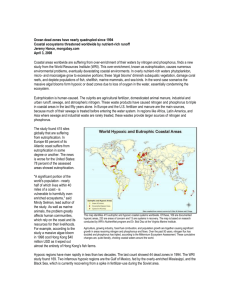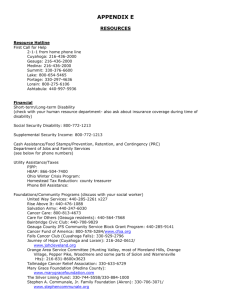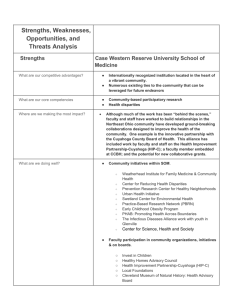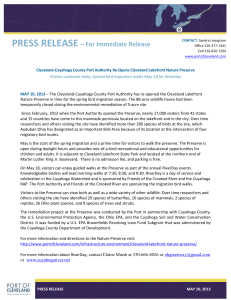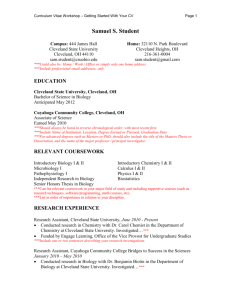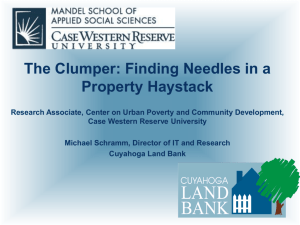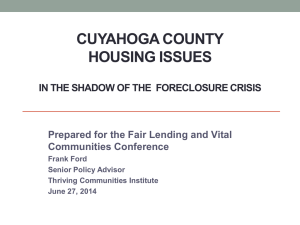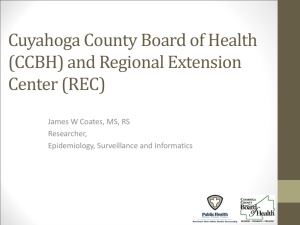Burn on Big River Presentation
advertisement
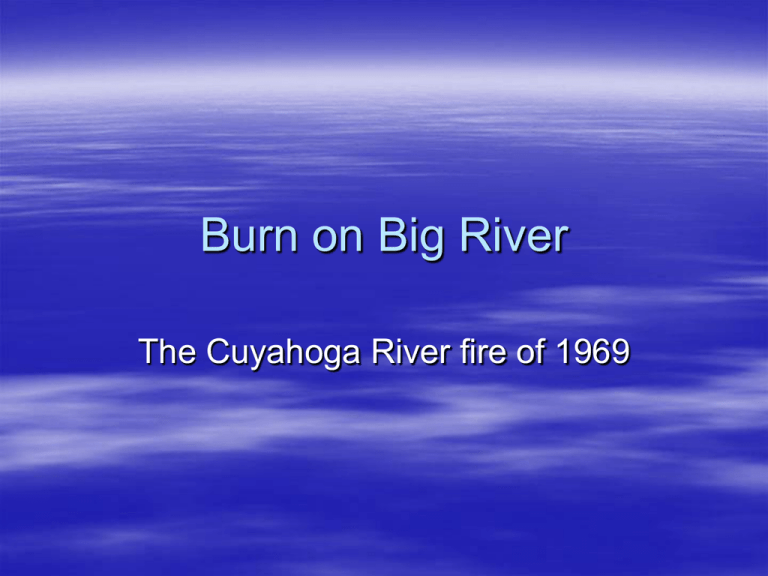
Burn on Big River The Cuyahoga River fire of 1969 A brief history of the river The Cuyahoga River, in Cleveland, Ohio, was important because it was one of the quickest ways to transport goods from the west (which Ohio was considered in the 1790s) to the east. However, it soon lost importance when the Ohio Canal was built, effectively bypassing the river completely. History continued… Since people were not using the river to ship anymore, many factories began to appear in the Northern section to take advantage of the flowing water. Fast forward to the mid-1800s and people have switched from water power to steam power. Because of the factories and the natural waste from coal, the river began to get polluted. History continued… As more and more people began to move to Cleveland, the Cuyahoga became their dump. Trash, waste, and even raw sewage went into the water. However, the main pollutant was oil from the factories. There was no one there to regulate what people were throwing into the river. The Cuyahoga was eventually described as a “flowing dump.” The Fires The first documented time the River caught fire was in 1936, when a spark from a blowtorch ignited it. This would not be the last fire for the river. 1952 1952 1952 The 1952 fire No one is sure exactly what started the blaze. Some think it was started by someone throwing a lit cigarette into the water and others think it was started by sparks from a passing train. This was the most costly blaze for Cleveland, causing nearly $1.5 million in damages, mostly to rail lines held above the water. Effects of the 1952 fire Even with statewide coverage of the event, there was not much outrage over the 1952 fire. The reasons for this are: – Environmentalism was taking a back seat to consumerism – Environmentalism was taking a back seat to global affairs 1969 It was not until June of 1969 that the River would catch on fire again. However, this time the world would eventually take notice. To the left is the only picture taken of that fire. Initial public reaction Even though a river was so polluted that it caught fire, many people took a while to notice. The picture only ran in two papers the next day. The fire chief was not even called out to investigate. He was quoted as saying, “It was a strictly run of the mill fire.” Time Magazine It was not until a month later, when Time Magazine ran an article, that the world was shown the picture of the fire. Time described the Cuyahoga as: – Some river! Chocolate-brown, oily, bubbling with subsurface gases, it oozes rather than flows. "Anyone who falls into the Cuyahoga does not drown," Cleveland's citizens joke grimly. "He decays." Other Quotes "The lower Cuyahoga has no visible life, not even low forms such as leeches and sludge worms that usually thrive on wastes.“ – The Federal Water Pollution Control Administration "The Cuyahoga will live in infamy as the only river that was ever declared a fire hazard.“ – Congressman Louis Stokes "I will never forget a photograph of flames, fire, shooting right out of the water in downtown Cleveland. It was the summer of 1969 and the Cuyahoga River was burning.“ – EPA Administrator Carol Browner Effects of the 1969 fire Time magazine suggested that the mayor of Cleveland at the time, Carl Stokes, should be held responsible for the state of the river. The interesting thing is that under Mayor Stokes, the river was actually improving. Fish and other wildlife were just starting to move back in. Mayor Stokes had just helped pass a $100 million bond to clean up the river a year earlier. Effects continued… Perhaps the most important thing the 1969 fire provided was a crystal clear example that the state of the environment was in disrepair. Pictures began to resurface of the 1952 fire and it was not long before environmental groups were calling for restrictions on water pollution. This led directly to the creation of the… Effects continued… The Clean Water Act: – Regulates the amounts and types of discharges into water. – Made it illegal to dump toxins into water. – Funded the construction of sewage treatment plants. – Passed in 1972 with major changes in 1981 and 1987 Effects continued… Federal and State Environmental Protection Agencies: – Develop and enforce environmental laws – Fund state and local environmental protection funds – Perform environmental research – Created in 1970 – http://www.epa.gov A Timeline of Events On the following page there will be some important events in the Environmental movement listed. Your job will be to create a timeline of these events and write a sentence or two describing what role each one played in the environmental movement. Events Publication of Sand County Almanac Cuyahoga River fire Senate hearings about leaded gasoline Chernobyl meltdown Creation of EPA First Earth Day Publication of Silent Spring by Carson Montreal Protocol Passage of the Clean Water Act Passage of the Clean Air Act


